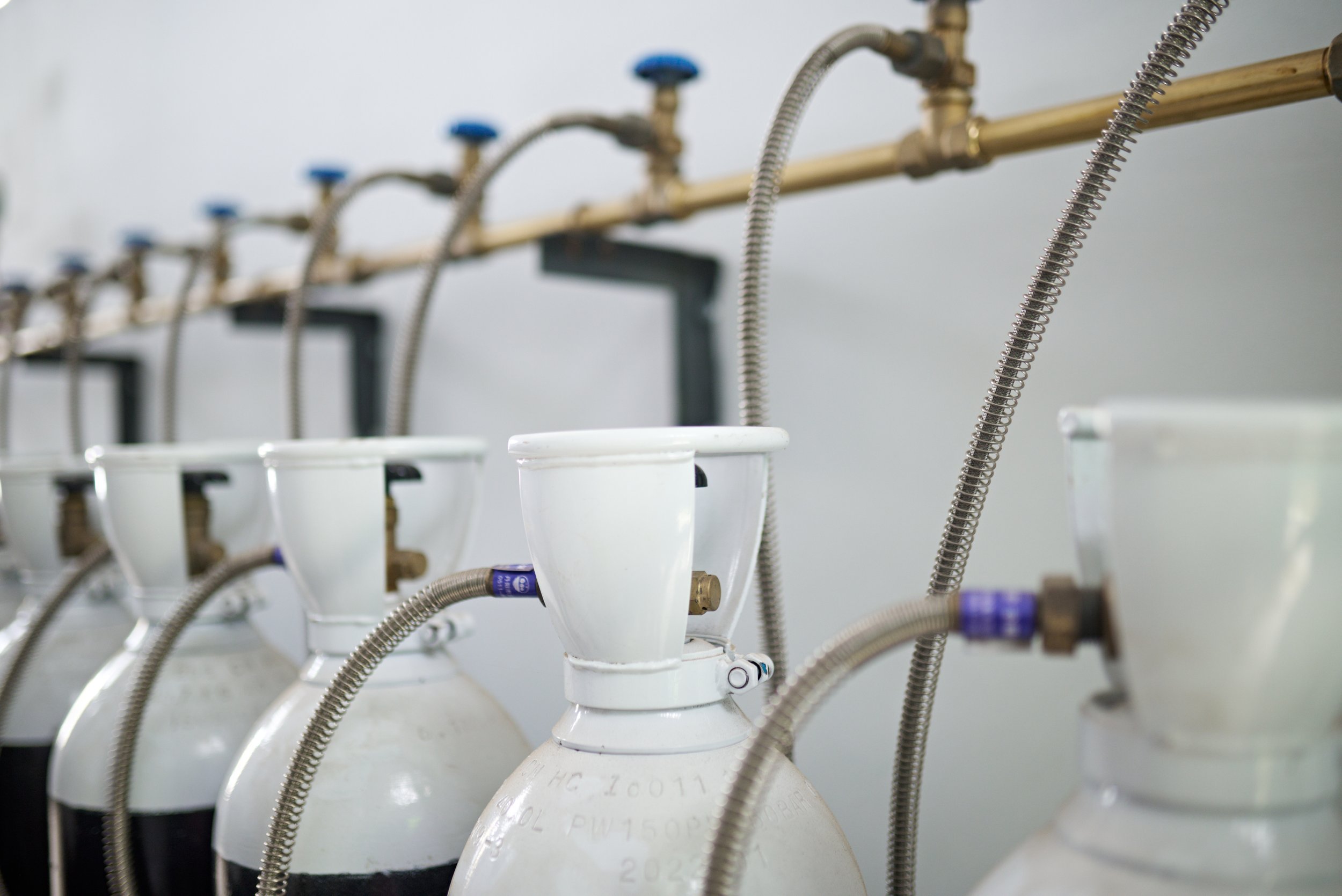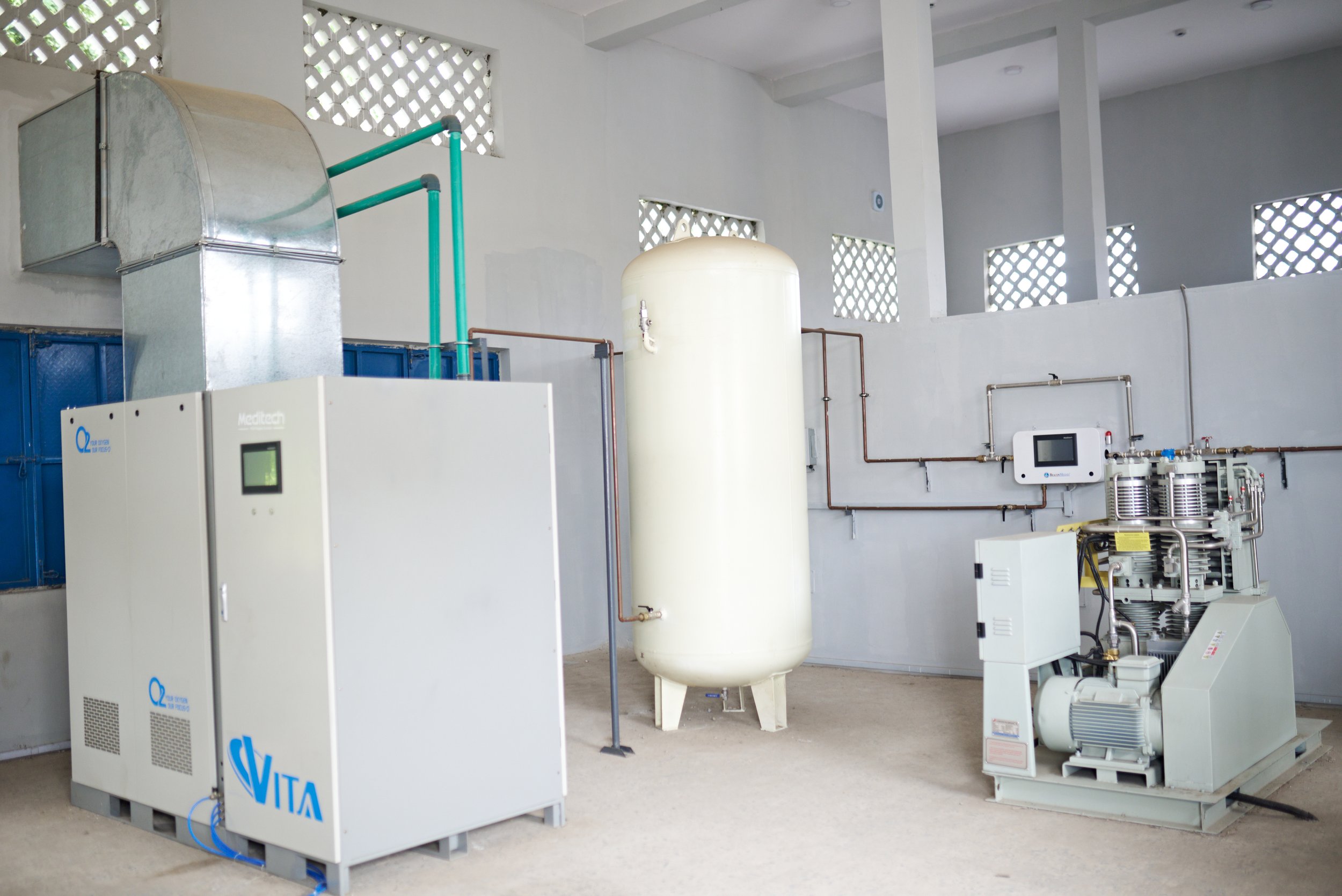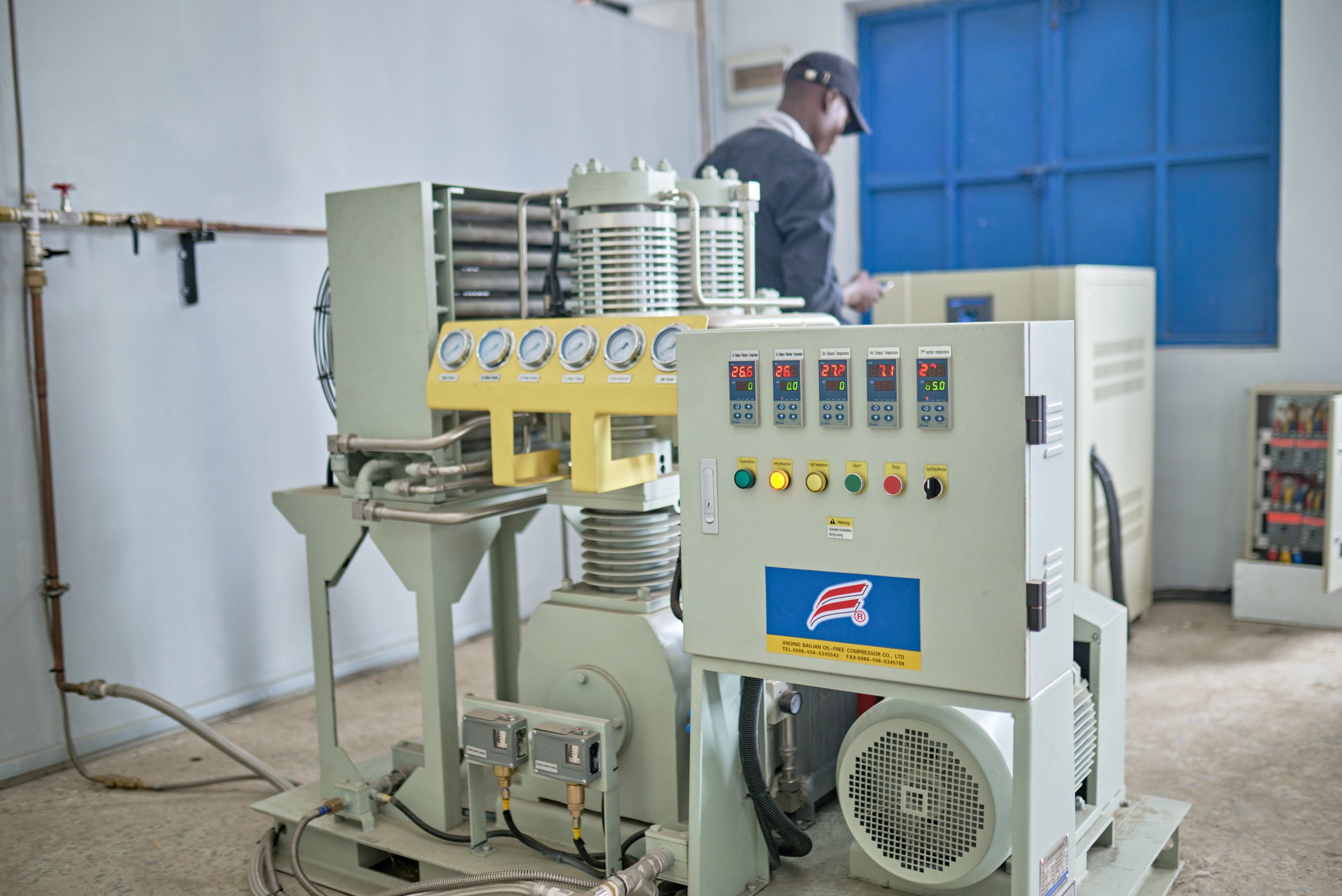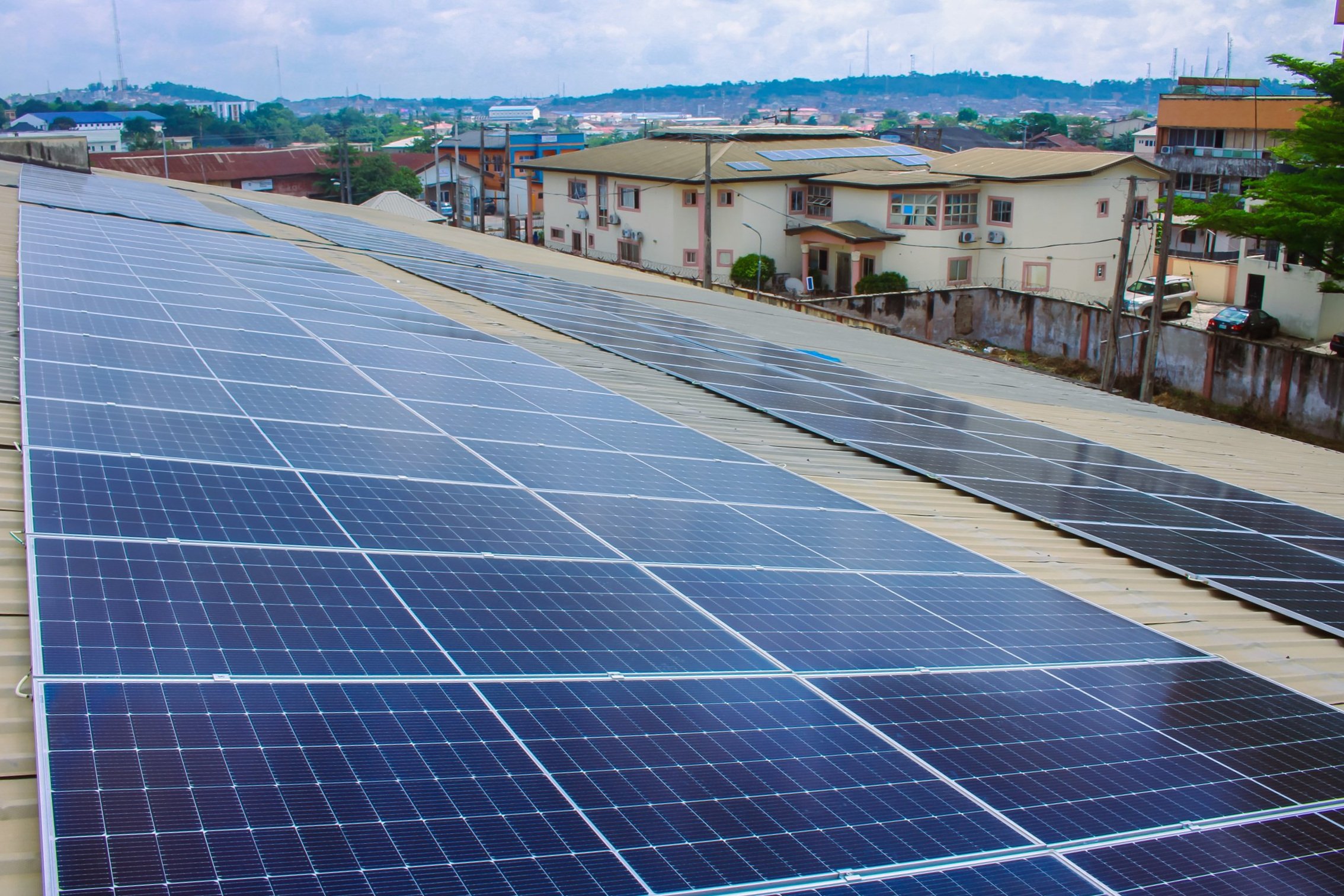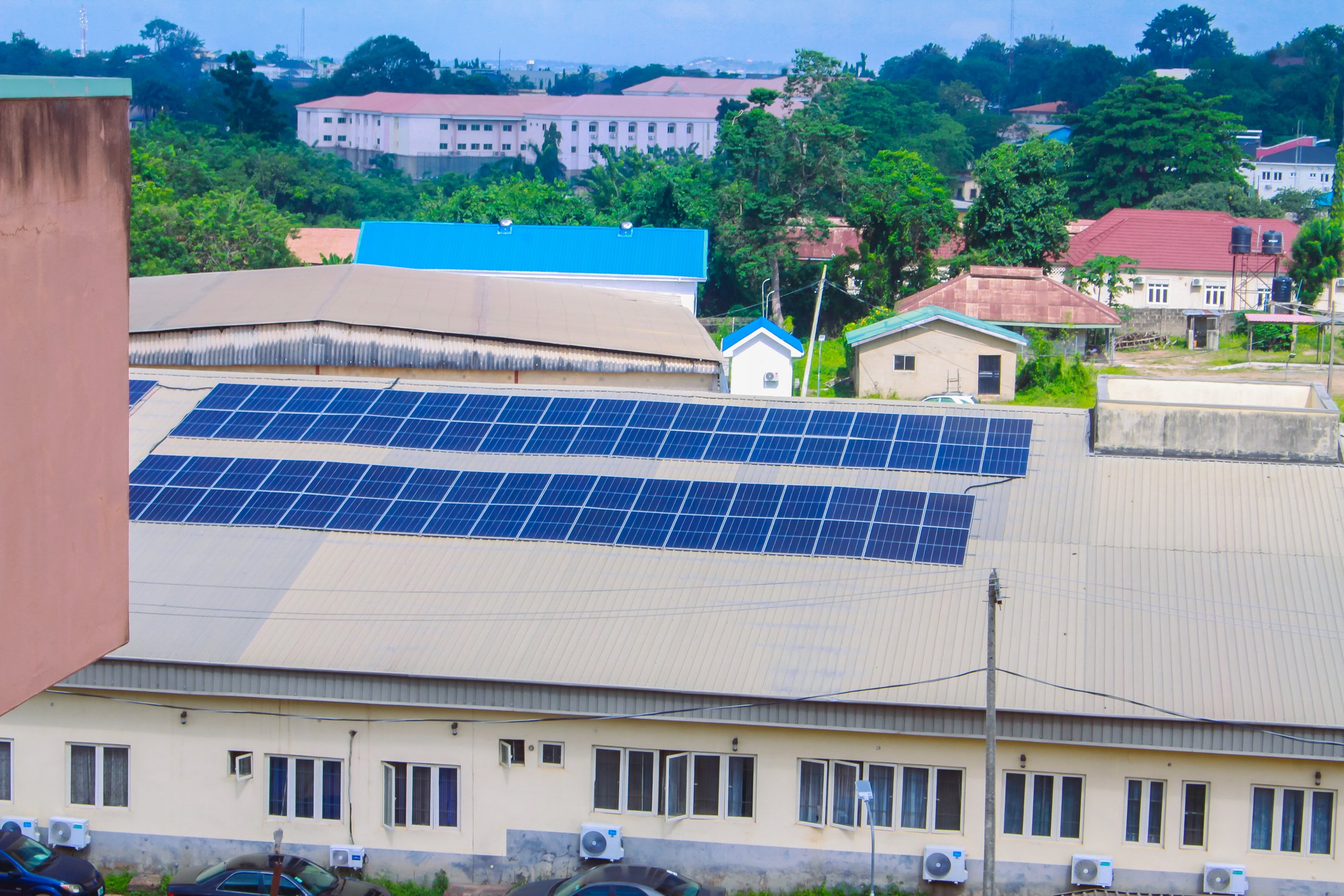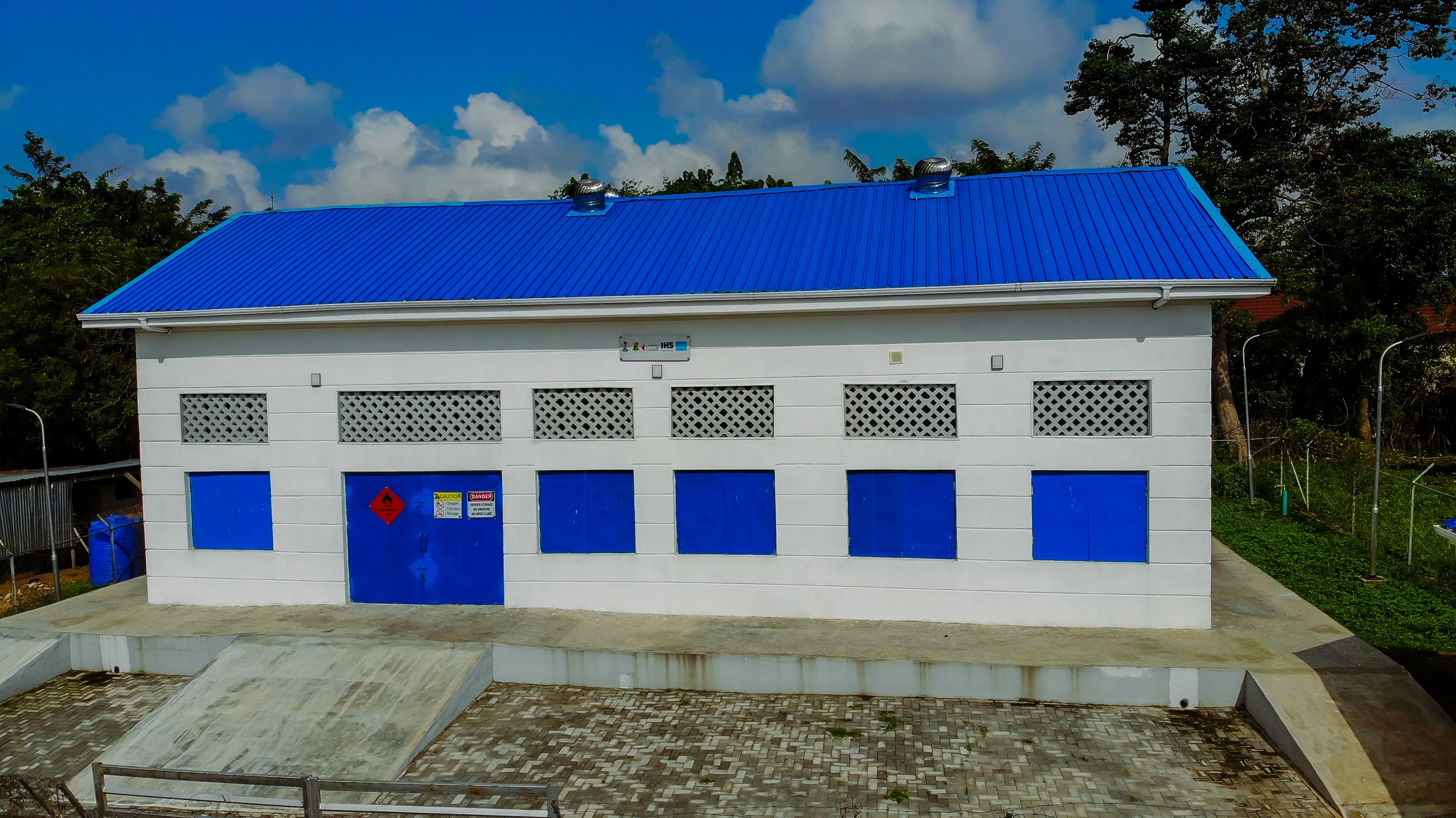UNICEF Oxygen Plants powered by EM-ONE Solar Microgrids
Sustainably Powering Medical Infrastructure
Improving healthcare and medical infrastructure with sustainable practices is possible. Our project, in collaboration with UNICEF, is a wonderful example of what healthcare innovation, sustainability and energy can achieve together.
Photo credit ©UNICEF/2023/Charles Asamoah
Introduction
Two hospitals, serving over 700,000 Nigerians, are now benefitting from on-site oxygen plants, powered by sustainable energy thanks to an initiative from UNICEF and EM-ONE Energy Solutions.
This pilot project is the first of its kind in Nigeria and part of a larger UNICEF programme to support the scale-up of medical-grade oxygen plants in over 100 low and middle-income countries.
EM-ONE worked closely with the UNICEF Health and Innovation teams to design and implement standard, modular solar plus storage microgrids that would provide the oxygen plants with reliable clean energy. The microgrids have a capacity of 80.3 kWp PV and 139 kWh energy storage.
The beneficiary hospitals – Muhammadu Buhari Specialist Hospital in Kano State and Jericho Specialist Hospital in Oyo State will now receive timely access to medical-grade oxygen, which has a particular impact on newborns, children under the age of 5, as well as COVID-19 patients and surgical patients.
The Problem
Oxygen is a life-saving medical gas that has no substitutes. It is essential in healthcare and often makes the difference between life and death. Oxygen is critical in helping treat respiratory illnesses, such as COVID-19 and pneumonia, and supporting various healthcare provisions including emergency care, surgery, and anaesthesia (WHO, 2023).
While oxygen therapy is highly effective in improving health outcomes and reducing mortality, having access to it remains a tremendous challenge in many parts of the world. The recent COVID-19 pandemic has emphasized this gap - particularly in low- and middle-income nations.
Nigeria is one of these countries. The nation ranks 205/208 globally in terms of life expectancy (SEforALL, 2022) and is part of Sub-Saharan Africa where mortality from pneumonia is the highest in the world (Our World In Data, 2019). Pneumonia is also the leading cause of death for children under the age of five, often linked to hypoxemia, or low blood oxygen levels, which oxygen therapy could contrast (UNICEF, 2023).
According to UNICEF’s report, over 120,000 children under five die each year due to hypoxemia. This represents nearly 20% of infant mortality worldwide caused by lack of oxygen (UNICEF, 2022). In addition to the difficulties in accessing medical-grade oxygen, Nigeria also experiences low levels of electrification within its healthcare facilities.
According to the Federal Ministry of Health, there are about 1.4 healthcare facilities for every 10,000 people in Nigeria, with most of them being primary healthcare facilities (PHCs). Out of the 28,036 publicly owned PHCs, it is estimated that only 30-40% are functioning properly. Shockingly, about 40% of these functional PHCs lack access to electricity, making it difficult to provide adequate healthcare services. Additionally, more specific assessments show that, on average, PHCs only have electricity for 6-10 hours a day, and fewer than 20% of them use solar power as an alternative source of energy (SEforALL, 2022).
EM-ONE has been working at the nexus of health and energy for the past six years. As experts in sustainable energy and technology, driven by a social mission – we worked with leading donors to address this gap. Our track record in powering healthcare includes projects with leading donors (ie. UK Aid, European Commission, USTDA and SEforALL) whereby we’ve designed and implemented portfolios of solar microgrids that power clinics and hospitals in desperate need of a sustainable, reliable, and affordable energy source.
Through our work, we have sustainably electrified over 150 clinics and hospitals across Nigeria and Sierra Leone. At EM-ONE, we have always believed in the importance of good healthcare infrastructure, and equity, as all living beings should get equal opportunities to survive and thrive. Powering healthcare remains a key focus area for our firm.
The Solution
Jericho Specialist Hospital, Ibadan, Oyo State - Photo credit ©UNICEF/2023/David Boman
To respond to the medical oxygen crisis, UNICEF developed an innovative all-in-one solution called ‘Oxygen Plant-in-a-box’ with everything needed to produce large volumes of medical-grade oxygen. The plant is an easily deployable solution that ensures that oxygen therapy is accessible to those who need it most.
The oxygen plant is equipped with a fully functional Pressure Swing Absorption Plant (a unit capable of separating oxygen from other ambient air gases) and all the essential equipment for setting it up and maintaining it, accessories, pre-planned maintenance services and staff training for operating it. This means the oxygen plants can be easily acquired, deployed, and become operational within days of arriving at a facility.
Jericho Specialist Hospital, Ibadan, Oyo State - Photo credit ©UNICEF/2023/David Boman
Jericho Specialist Hospital, Ibadan, Oyo State - Photo credit ©UNICEF/2023/David Boman
UNICEF is deploying nine oxygen plants at high-impact hospitals across Nigeria .
The impact of this project is expected to be massive, saving thousands of lives. As previously mentioned, pneumonia is Nigeria's biggest cause of child mortality. Still, recent studies estimate that oxygen therapy can reduce the risk of death from severe pneumonia by 35% (Duke et al., 2008; Graham et al., 2019).
However, in the planning for the two pilot sites – it soon became evident that the country’s erratic and unreliable power supply would be an issue in ensuring the effective operation of the plants.
EM-ONE worked with UNICEF’s Health and Innovation teams to develop a sustainable energy solution that would provide reliable, renewable, and affordable power to their Oxygen Plants. The solar microgrids designed are integrated with energy storage, providing the necessary energy solution to ensure the seamless operation of the oxygen plants. The microgrids were designed with energy storage to ensure there was no disruption to oxygen production during cloudy or rainy days.
The Project and EM-ONE’s Solar Power Contribution
Jericho Specialist Hospital, Ibadan, Oyo State - Photo credit © EM-ONE
We constructed two state-of-the-art solar energy systems, each coupled with battery storage, designed to power UNICEF oxygen plants at the Jericho Specialist Hospital in Oyo State and the Muhammadu Buhari Specialist Hospital in Kano State. The microgrids have a capacity of 80.3 kWp PV and 139 kWh energy storage.
EM-ONE’s involvement in this UNICEF initiative adds a new dimension to the fight against oxygen shortages in underserved regions: by constructing two solar energy systems integrated with battery storage, EM-ONE is providing a sustainable source of power to the UNICEF oxygen plants, ultimately contributing to the well-being of communities in Nigeria.
Jericho Specialist Hospital, Ibadan, Oyo State - Photo credit © EM-ONE
Benefits of Solar-Powered Oxygen Plants
Reliability: Solar-powered oxygen plants offer a stable source of energy, reducing the risk of treatment interruptions due to power outages. This reliability is crucial in ensuring patients receive the necessary care without disruption.
Cost-Effectiveness: Solar energy is not only reliable but also cost-effective in the long run. It reduces the operational costs associated with running oxygen plants, freeing up resources for other essential healthcare needs.
Environmental Sustainability: Solar power is a clean and renewable energy source, making it an environmentally responsible choice. It aligns with global efforts to reduce carbon emissions and combat climate change.
Scalability: EM-ONE’s energy solutions can be replicated and scaled to other locations, further expanding the reach of these life-saving oxygen plants.
EM-ONE Engineer Bashir at Jericho Specialist Hospital, Ibadan, Oyo State - Photo credit ©UNICEF/2023/David Boman
The effort between EM-ONE and UNICEF is a shining example of how innovative solutions and cooperation can have a profound impact on global health. By combining the expertise of UNICEF in healthcare innovation and the renewable energy prowess of EM-ONE, we see a compelling case for a sustainable future in healthcare services.
Conclusion
UNICEF team at Jericho Specialist Hospital, Ibadan, Oyo State - Photo credit ©UNICEF/2023/David Boman
By providing uninterrupted access to energy as well as oxygen therapy, this project has the potential to save countless lives and improve the quality of healthcare services in Nigeria.
It also serves as a testament to the transformative power of renewable energy and innovative collaborations in addressing pressing global healthcare issues.
The synergy between EM-ONE’s and UNICEF’s work to power these oxygen plants in Nigeria with solar energy is still a small yet meaningful achievement in the journey towards sustainable and reliable healthcare in underserved regions. We hope it can become a model worldwide so access to oxygen therapy will no longer be a luxury or a matter of concern in areas with limited resources.
Project Partners
UNICEF Nigeria has an interdisciplinary team tasked with identifying, prototyping, & scaling technologies and practices that strengthen UNICEF’s work for children’s rights. UNICEF (United Nations International Children’s Emergency Fund) has a 70-year history of innovating new approaches, partnerships, and technologies to support children and improve their lives.
EM-ONE is a Canadian-Nigerian engineering and technology firm, advancing the sustainable energy transition in Africa. The company has successfully designed and built over 150 solar microgrids with total PV capacity of over 14 MWp that sustainably power hospitals and clinics in Nigeria and Sierra Leone. It is currently building on this success to expand its impact in powering healthcare across Africa.


